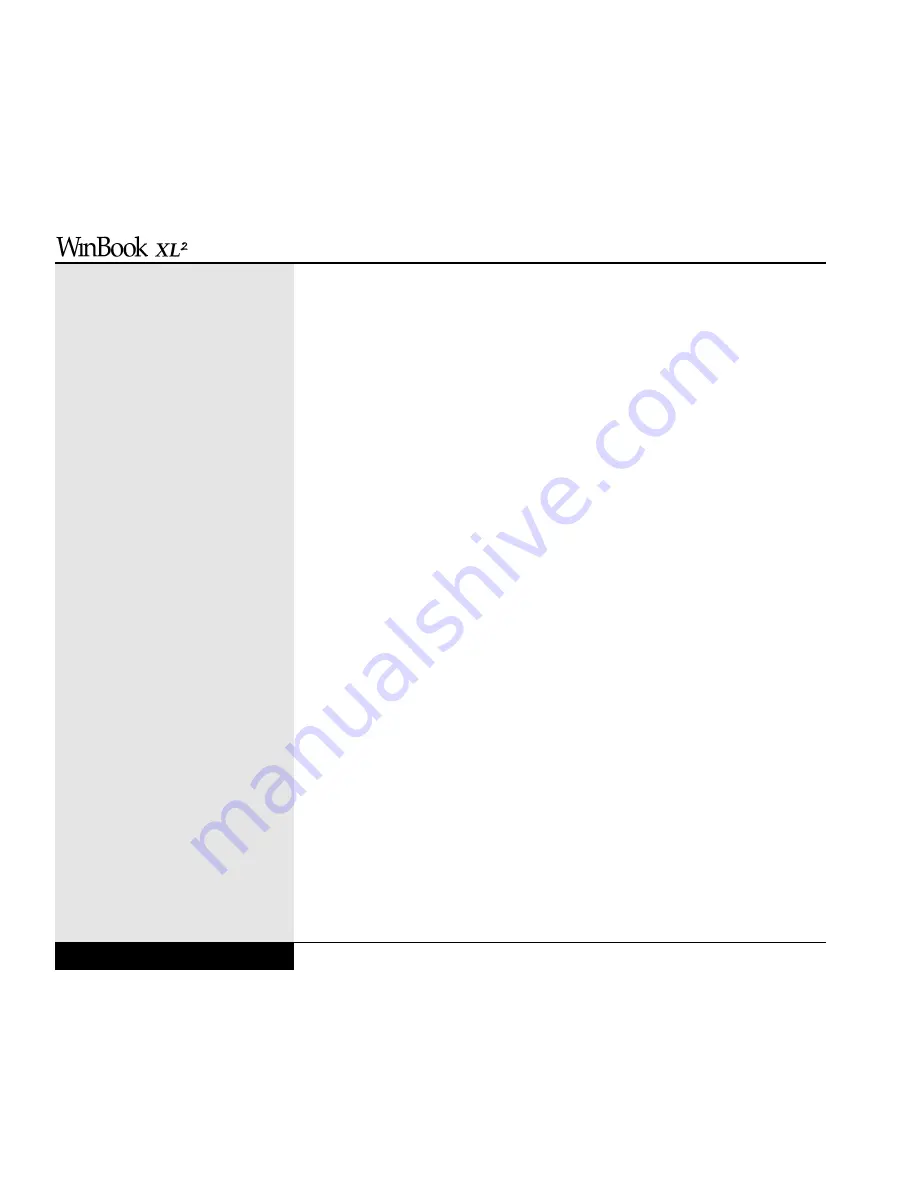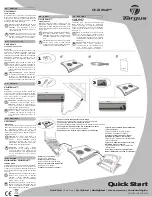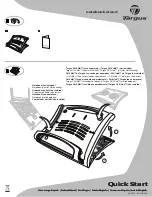
The Keyboard
(Figure 1.9)
Your main interface with your computer will be your keyboard. If you are
unfamiliar with the standard PC keyboard, some of its keys are explained
in this section. The keyboard has all the standard computer typing keys and
some control keys. If you are not familiar with the computer control keys,
the major ones are discussed below.
The [Alt] and [Ctrl] keys, like the [Shift] key alter the function of the tradi-
tional typing keys and the function keys. Depending on the software you
are using, the actual function of the [Alt] and [Ctrl] keys will vary. They
might also be used in combination with each other and/or with the [Shift]
key to provide further possible combinations of functions with the typing
keys. For example, the [Alt]+[Ctrl]+[Del] combination is used to close
down an application in Windows 98 that has “hung” or can be used to pro-
vide a warm reboot of the computer system.
The function keys (F1-F12) serve different purposes and carry out different
tasks depending on the application you have running. They are often used
in combination with control keys. You should check the documentation for
your application, especially sections on keyboard shortcuts, for information
about what the keys do in that application.
The cursor (arrow) keys (which are all located in the lower right corner of
your keyboard) and the [Pg Up], [Pg Dn], [Home] and [End] keys (which
are located along the right edge of the keyboard) allow you to move the
active cursor of the computer to various locations on the screen or within
the document. The [Ins] and [Del] keys at the bottom of the keyboard to
the left of the cursor keys allow you to insert and delete characters.
Your computer also has an embedded numeric keypad. This numeric keypad is
printed in gray on the keyboard. If the NumLock key is engaged, the pad will
allow you to type numbers as you would on a 10-key pad. If the NumLock is
not engaged, the keys perform their normal alphanumeric function.
User’s Manual
1.16
Summary of Contents for XL2
Page 1: ...User s Manual for notebook computers ...
Page 6: ...Table of Contents 6 Table of Contents ...
Page 11: ...Preface v ...
Page 13: ...Chapter One Getting Started Chapter 1 Getting Started 1 1 ...
Page 40: ...Chapter Two Basic Computing Chapter 2 Basic Computing 2 1 ...
Page 60: ...Chapter Three Mobile Computing Chapter 3 Mobile Computing 3 1 ...
Page 80: ...Chapter Four Desktop Operation Chapter 4 Desktop Operation 4 1 ...
Page 98: ...Chapter 4 Desktop Operation 4 19 ...
Page 99: ...Chapter Five PC Cards PCMCIA Chapter 5 PC Cards PCMCIA 5 1 ...
Page 113: ...Chapter Six Video Settings Chapter 6 Video Settings 6 1 ...
Page 123: ...Chapter Seven Upgrading Chapter 7 Upgrading 7 1 ...
Page 135: ...7 13 Chapter 7 Upgrading ...
Page 160: ...Chapter Nine Troubleshooting Chapter 9 Troubleshooting 9 1 ...
Page 187: ...Glossary Glossary G 1 ...
Page 204: ...Index Index I 1 ...
Page 211: ...WinBook Corporation 2701 Charter Street Hilliard Ohio 43228 ...
















































